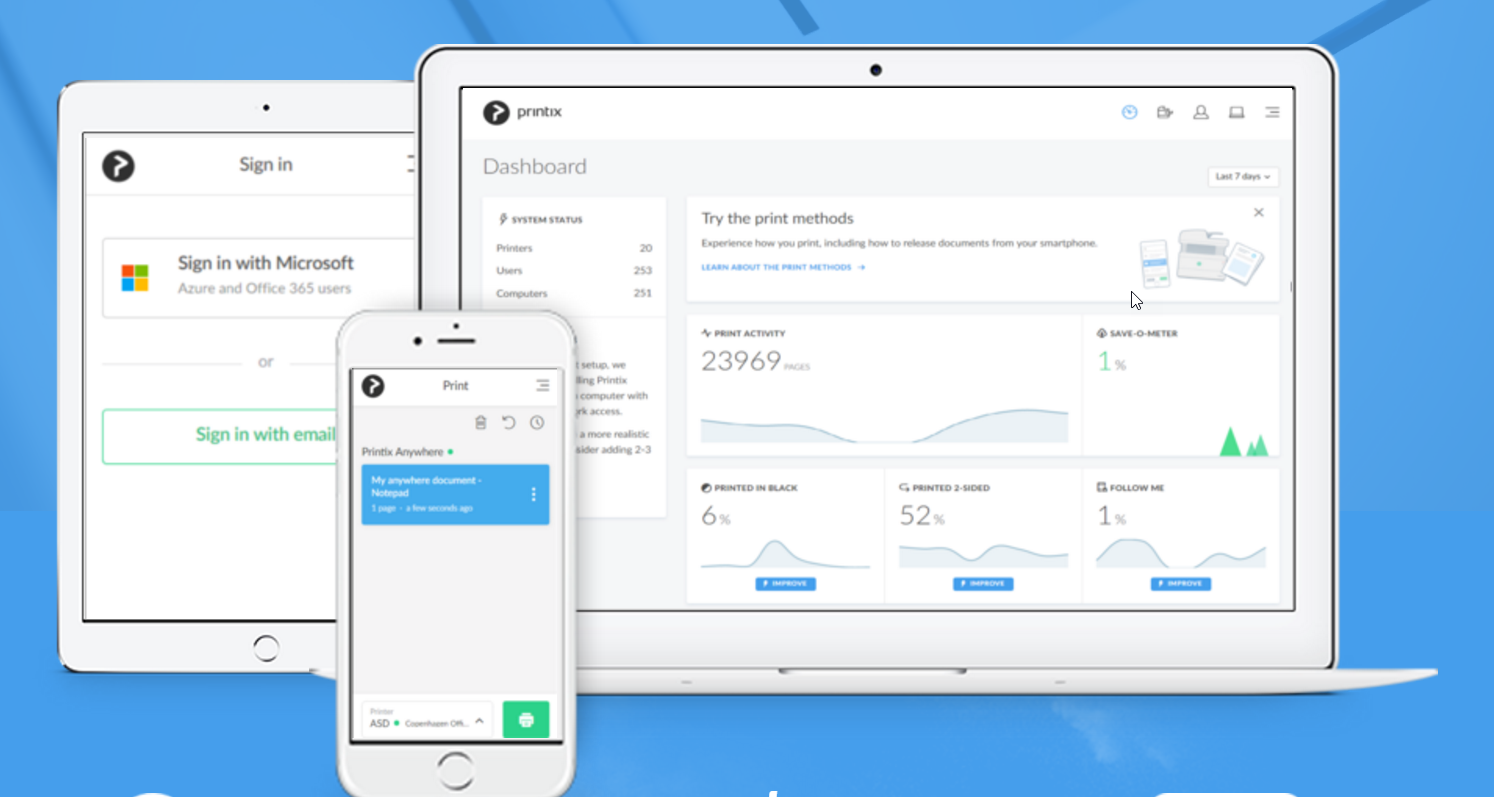 The MPS company gave “eight key elements” of Software-as-a-Service (SaaS) compared to “traditional” MPS.
The MPS company gave “eight key elements” of Software-as-a-Service (SaaS) compared to “traditional” MPS.
EIN hosted the article from the European company, stating that its “cloud-based SaaS brings radical transformation to print management”, and that it is “showing the way to help companies bring print management to the cloud while eliminating print servers and streamlining printing operations”. By adding a “subscription-based” SaaS business model, “innovation is born in a somewhat slow-growing and notoriously stodgy industry”, it pointed out.
The company stated that it was “founded on the premise that companies still use too much time and money on managing a print environment and all aspects of printing, while often having little or no insight in to the actual costs”, and Hugo Marqvorsen, Printix’s Business Development Manager and co-founder, commented that “our simple vision is to automate print management and simplify office printing, to help customers optimize their investment with the least amount of effort, risk and cost”.
Cloud-based SaaS products have “been part of the new wave that’s transforming the way we design and manage our workspace”, such as Office 365 and Sharepoint, with Marqvorsen stating that Printix’s SaaS “ isn’t just a different delivery model but a radical transformation in the way print management software is accessed, licensed, experienced and valued by customers”.
On the “key elements”, Printix stated that traditional MPS solutions “are complex, expensive and usually focused on the needs of large enterprises”, and “require special technical knowledge and ample resources to install, maintain, and support”, but its new software helps customers “realise the benefits of having greater visibility and control over their print environment and the potential to increase efficiency whilst cutting costs”.
The elements are looked at “side-by-side” with traditional MPS, the first “software cost and payment frequency”, with SaaS from Printix meaning a company “only pays for active users that printed in the previous month” with no “license fee, no upfront investment cost or any installation fee”. On the traditional side, a “perpetual license means you pay upfront and own a licence”, though subscription pricing is “increasingly popular”, but additional costs will occur with new users or upgrades.
Second was “maintenance cost”, with Printix including “maintenance and support” for “unlimited printers and unlimited users”, while traditional MPS “will typically require you to take an annual maintenance contract”, which can be priced “anywhere from 10 percent to 25 percent of the initial licence cost”, and can change when the contract elapses.
Third was “implementation cost”, and for Printix there is “no implementation fee” and a simple installation process, while traditional MPS features “software installation, database configuration and testing”, with costs “incurred again on any future major upgrades”. Fourth was “hosting cost”, with Printix hosting the software “so you don’t need to use or buy any server” that is “compatible with any device with a web browser”, while traditional “will likely require new or upgraded hardware”.
Fifth was “data back-up”, with Printix data “stored securely” in the cloud alongside print drivers, while traditional MPS back-ups “will need to be made by you”. Sixth was “personnel cost and requirement”, with Printix managing and maintaining the system “as part of the cost”, while traditional MPS requires IT staff “to manage the software and hardware”.
Seventh was “security”, with Printix said to be “at least as secure as traditional” MPS and using HTTPS encryption, while traditional MPS clients will “manage their own data security”. Finally, “upgrades” in Printix are managed by the company and are free, while in traditional MPS “all upgrades and costs associated with labour and hardware is with the client”.
